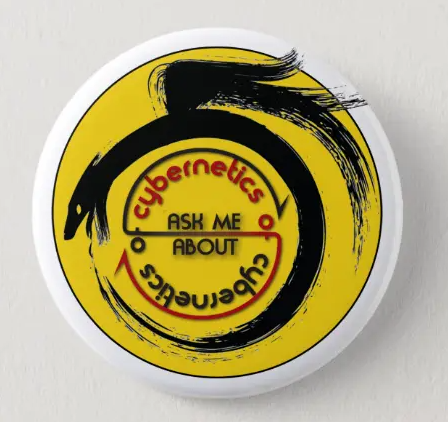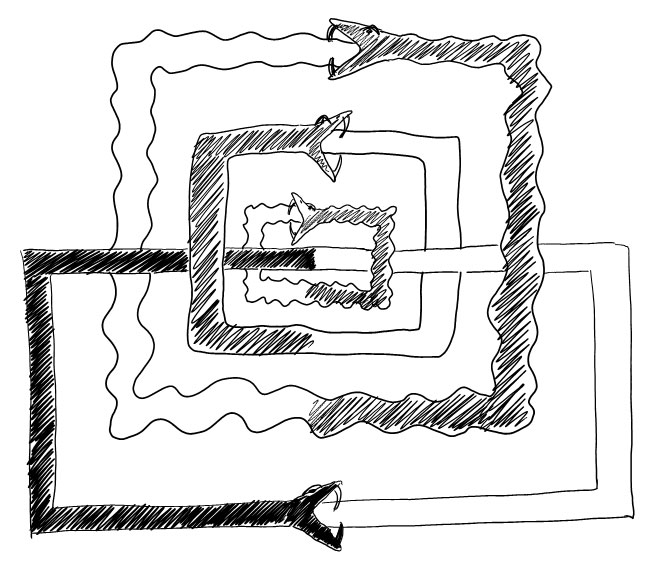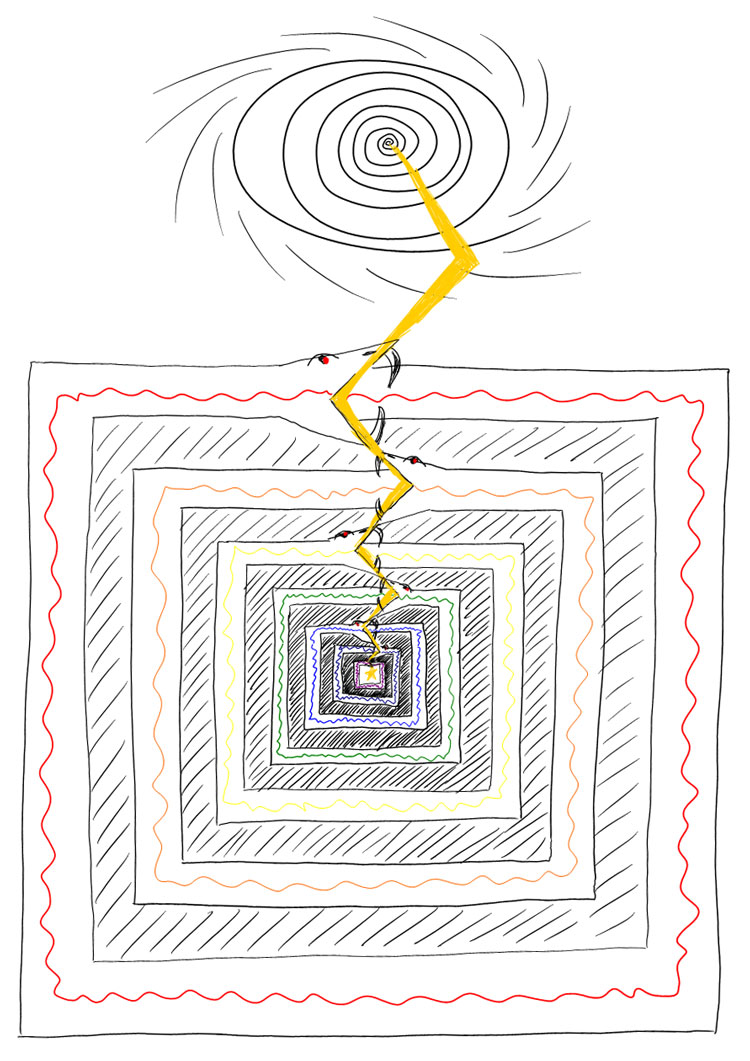Oct
18
2009
I made this button for all those people out there who want to keep complexity complex, who understand that feedback is the name of the game, and that the main rule of the game is that the rules must continually be modified. If you know about Calvinball, you know what I'm talking about: a...
Mar
24
2009
Edgar Morin, who calls for a transdisciplinary way of thinking, wrote an amazing short essay entitled "A New Way of Thinking". (A New Way of Thinking.pdf) One of the principles of this new way of thinking involves recognizing that wholes and parts are mutually interactive: "properties emerge from the organization of a whole and may...
Jan
30
2009
So then to begin in the middle I have many questions:
What constitutes an observer? How do we think about what an observer is/does? Is it as simply complex as the recursive: “An observer creates distinctions; distinctions create observers.”?
What is a distinction? In order for it to occur, does it require...
Jan
26
2009
A friend of mine said:
"... Concerning self-correction, can we say that the system corrects itself toward a state of homeostasis (feedback----correction----goal) OR toward maintaining the integrity of the closed system? Is it o.k. to look at this in terms of homeostasis?
Reason why I'm asking is that I've been looking at the socialization behavior...
Jan
18
2009
Ross Ashby says:
That homo has a brain no more entitles him to assume he knows how he thinks than possession of a liver entitles him to assume that he knows how he metabolises.
(http://www.rossashby.info/aphorisms.html)
Jan
03
2009
Now, another challenge was proposed, to proceed to a third transposition inspired by Varela's star cybernetics.
My response:
simplistic/complex ---> multi-ordered simplexity
how to fix/how to engage ---> ascripted re-presencing
compulsive mappings/flexible relations ---> constructive deconstruction
textbook categorizations/situational phenomenologies ---> second-order homeodynamics
control the universe through mapping/participate in the universe through walking its territory --> co-construction of universe and self
dominant masculinist...
Jan
02
2009
The following exercise was proposed:
Take the following list, culled from a critique of Ken Wilber's work by philosopher William Irwin Thompson, Coming Into Being and write the opposites.
simplistic
how to fix
compulsive mappings
textbook categorizations
control the universe through mapping
dominant masculinist purposefulness
shift power from the described to the describer
psychic inflation and self-magnification
a grand pyramid with the advocate on top
lacking poetic...
Jan
01
2009
I'd like to make a contribution with regards to circularity/linearity, from a geometrical standpoint. If you don't like geometry, stop reading, or better yet, read with increased intensity.
The polarity between circle/line is one that is fundamental to many geometries - they are taken to be quite different logical entities. Primarily this arises because of...





